
Court halts tailings increase as First Nation challenges B.C.’s decision to greenlight it
Court sides with Xatśūll First Nation, temporarily halting Mount Polley mine waste expansion
On an early Saturday evening last August, under the high ceiling lights of the competitive pool at the University of Waterloo, great change was entering the shallow end. And coach Jacky Beckford Henriques was terrified.
It was the first lesson of the learn to swim program she had designed for a group of women and girls who are Black, Indigenous or of colour, and she had to be sure everything would go right — that she could keep these students, and their trust in her, afloat. That summer day, she boarded the bus she had chartered to make sure all the students, many of them Muslim, got to the pool.
“First times we did it, I was the one on the bus every time. We would meet at their community centre, and I’d be on it because I’m terrified at this time that something’s gonna go wrong — and the university is gonna pull the program,” she says.
After spending the first decade of the millennium as head coach of Jamaica’s national swim team through three Olympic games, Beckford Henriques came to Waterloo, where she has been the university’s head swim coach since 2017. She knows what she’s doing: in 2019, she was named Ontario University Athletics Coach of the Year. And yet, her newest challenge felt daunting.
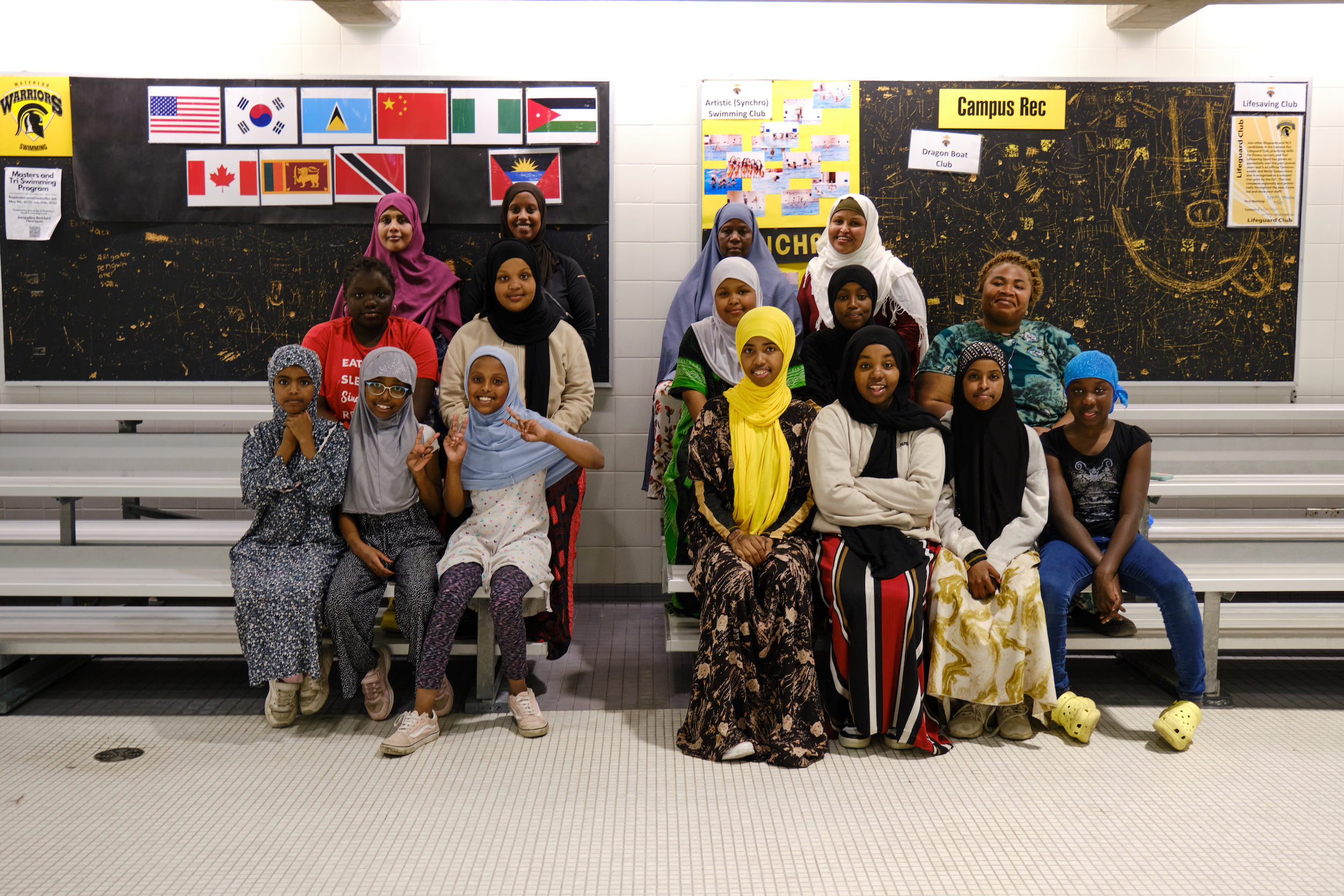
On the bus, she took a head count, then began telling the students about the program she had designed. “My first day, I give this grandiose speech to my 40-odd people about the danger of water, swimming and all that. And when I’m finished, one of the mothers says ‘Hold on a minute,’ and she goes over and translates what I said.”
The joke was on Beckford Henriques, who had prepared for so much — but had arranged for a translator who spoke Arabic when many of her students spoke Somali.
Waterloo’s learn to swim program came out of an effort by The Alliance, a collective of staff and students at the university trying to improve equity, access and inclusion in the school and the surrounding community. A co-founder of The Alliance, Beckford Henriques says the swim program was part of the university’s response to the 2020 protests for Black life, spurred by the police killing of George Floyd in Minneapolis, when institutions across North America promised to seek better outcomes for marginalized communities.
The program is free, funded by the Kitchener and Waterloo Community Foundation and the university, which also offers the pool itself. Members of the school’s swim team serve as instructors. Lifeguards are about, providing support if need be.
This program has been a long time coming for Beckford Henriques. In her youth, as a schoolgirl in England in the 1960s, swimming was germane to the curriculum. But as a coach in Jamaica, she saw that without school programs, affordability was a tremendous barrier for local children. “In my old age, it’s just stuck in my mind how many children couldn’t swim. And so, back in Jamaica, I always wanted to do a free program. But I couldn’t afford to do it at the time,” she says.
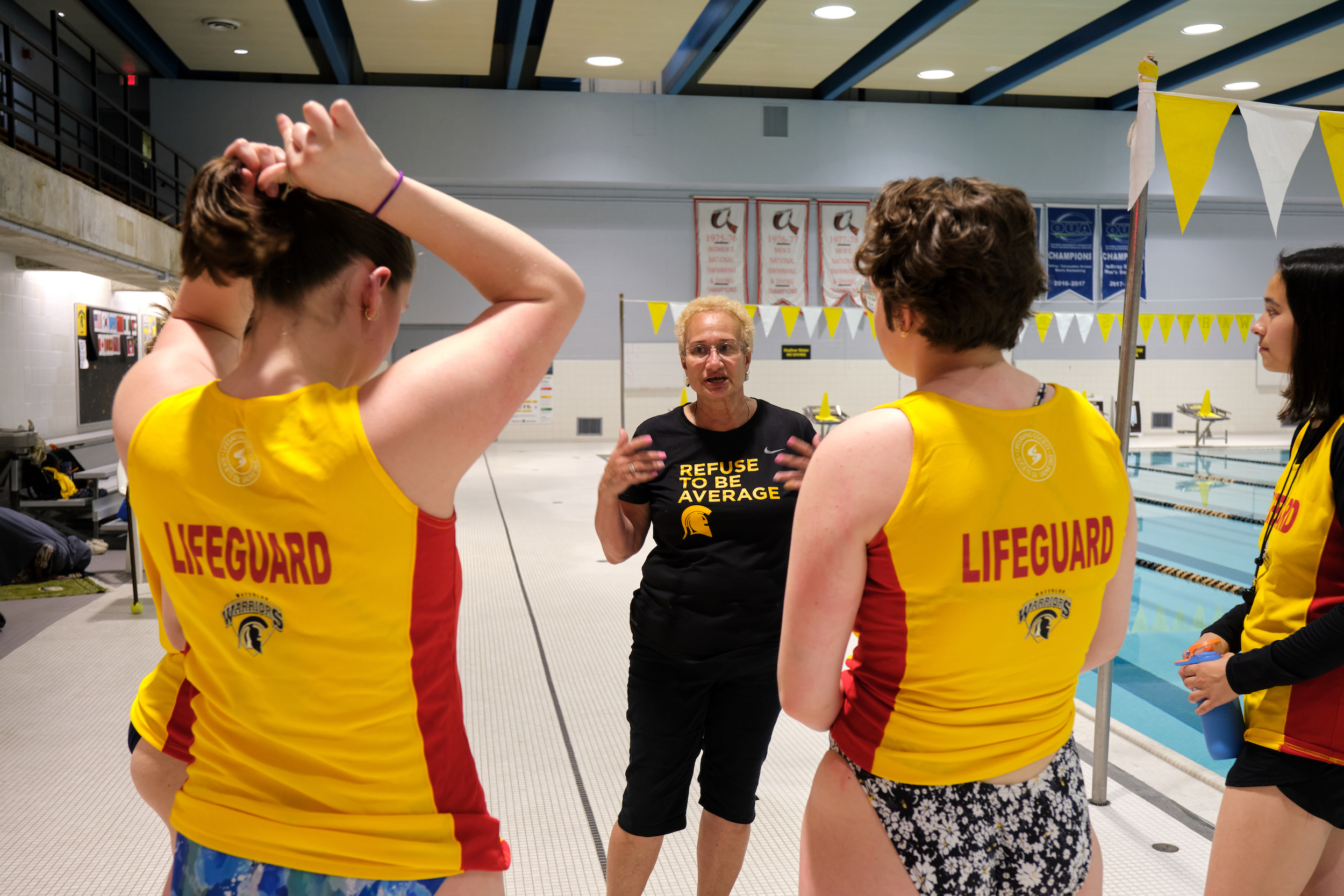
Deploying a free-entry program that is empathetic and culturally attentive — as well as opening a university facility to the larger community — is one novel act to navigate the waters of a larger problem.
According to a 2017 Ipsos poll commissioned by Global News, swimming “is the most popular and affordable activity” in Canada. But marginalized communities are not represented in the places where Canadians swim, whether at indoor facilities like schools and community centres or outdoors in the ponds, rivers and lakes of this country.
It’s a hard problem to quantify, as Canada is notoriously poor at keeping race-based data, but researchers say a lack of access to swimming lessons and spaces is felt acutely by Black, Indigenous and other racialized people. This lack means fewer opportunities for exercise, recreation and competition — as well as a greater risk of drowning — and is rooted in decades of policies that reflected exclusion and heightened stereotypes, and the prioritization of affluent classes of people.
This year, Beckford Henriques’ swim session at Waterloo was for women and girls only: other sessions available to men and boys didn’t get as much pickup from participants.
Language wasn’t the only cultural difference Beckford Henriques had to learn to accommodate. “They came in and I’ll never forget the first couple of classes — full gowns on these women,” she recalls of the modest dress worn by the Muslim students. “And when I say full gown, the only thing missing was the covering right across their face, but their hair was covered.”
The students were eventually provided culturally appropriate swimwear from the charity Adventure 4 Change. “But even before that, you know, the layers started coming off,” she says. “Which told me that they then trusted that we were going to create the right environment for them.”
On the whole, drowning deaths in Canada are on a “long-term downward trend,” according to a 2017 report by the Drowning Prevention Research Centre. But hundreds still die this way every year: 232 in 2019, according to Statistics Canada, which noted in 2022 that 55 per cent of drownings occur in swimming pools and 21 per cent in natural bodies of water. Sixty-four per cent of those who drowned were under the age of nine.
Those deaths are disproportionately among racialized people, as far as we can tell. The most detailed study is almost a decade old now: in 2014, University of Toronto researchers Michael Fralick, Zane Gallinger and Stephen Hwang attempted to pinpoint the ethnicities of those who drowned in rural Ontario by running names provided by the province’s coroner’s office through a computer program that assigned each surname a likely ethnicity and country of ancestral origin.
The researchers noted the limitations of this approach in the paper they eventually published in the Journal of Immigrant and Minority Health, but given Canada’s dearth of better data, it seemed a worthwhile endeavour.
The findings were stark. The researchers found that drowning rates in rural Ontario were significantly higher among men and women of Asian, African or Hispanic ethnicity when compared to white men and women.
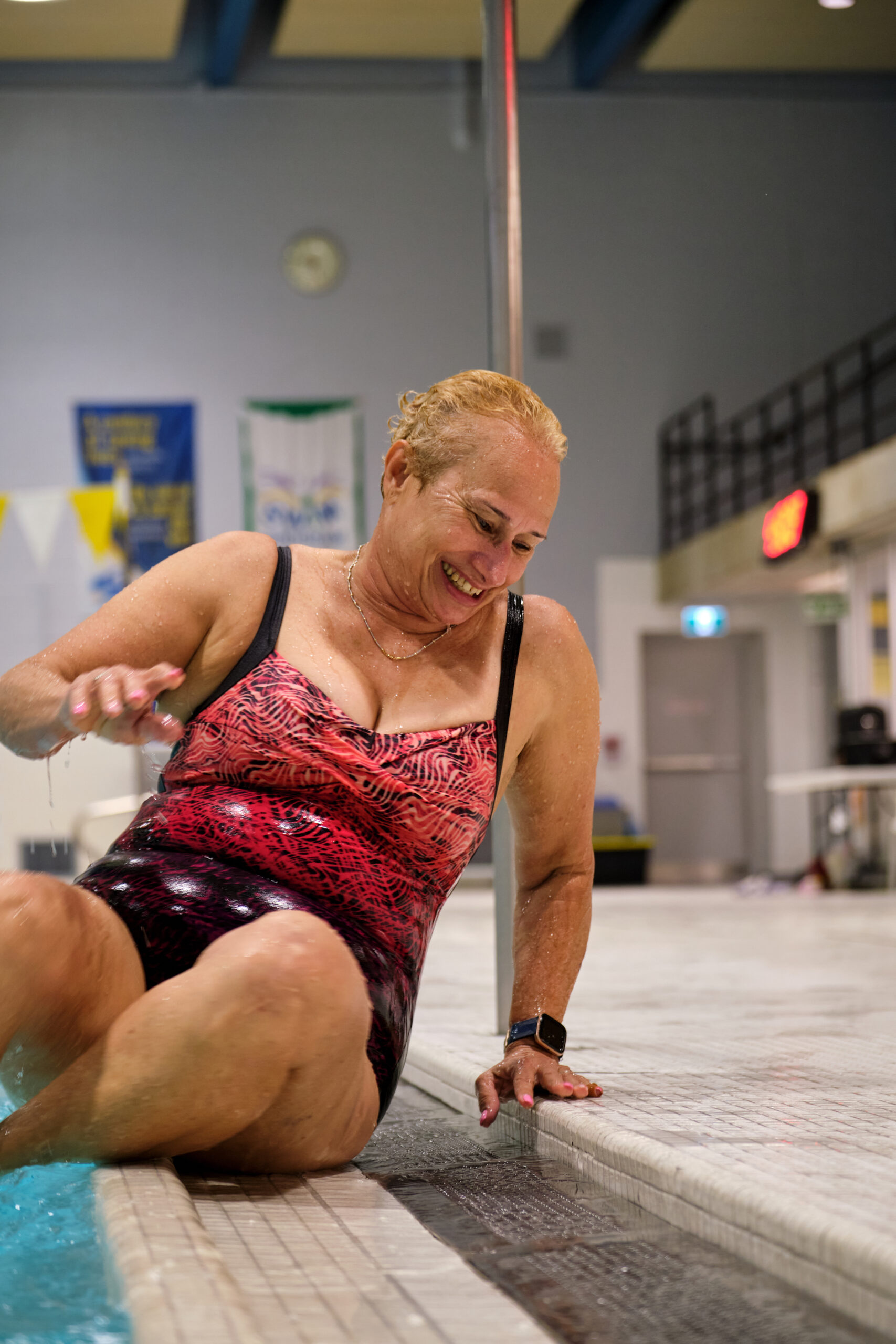
No similar study has been done since, but the Canadian Drowning Prevention Coalition noted in a report last year that racial and ethnic disparities in drowning are still an issue. Drowning “threatens all populations, but risks parallel many social determinants of health, disproportionally affecting First Nations, Inuit and Métis peoples, new immigrants and rural populations,” reads the foreword to the ninth edition of the coalition’s drowning prevention plan.
In Ontario, there is one heartbreaking concrete example: in 2017, a Black teenager named Jeremiah Perry drowned on a school trip to Algonquin Park. Four years later, the 15-year-old’s teacher was found not guilty of criminal negligence for allowing Perry into deep water without a lifejacket, even though he didn’t pass the school board’s pre-trip swim test. However, said the judge, “if this was a case of civil negligence, the test would be met.”
To fix this disparity going forward, it’s important to understand how a systemic issue manifested in this way. Bringing a critical lens to the history and theory of the past century is telling.
This past January, professor Ornella Nzindukiyimana of St. Francis Xavier University in Nova Scotia explored the roots of inequity in Canadian swimming in a keynote speech at the Redesign Conference. The annual summit at the University of Toronto is hosted by the Equity, Diversity, Inclusion and Belonging team of the school’s sport and recreation department, and the theme of the 2023 conference was “All About the Pool.”
Not many places in Canada had specific laws preventing Black people’s access to swimming pools, a 1923 ban in Edmonton being a notable exception. But as Nzindukiyimana pointed out, “there were no laws preventing discrimination at the discretion of pool owners and managers either.” In addition to the old myth that the bodies of people of colour would contaminate pools, Nzindukiyimana said the general threat of racial mixing in the water was enhanced because of swimmers’ state of undress “and the imagined threat to the White woman.”
“Being able to go for a swim at a beach or at a local pool depended on time and place. In some cases, it depended on how many other Black swimmers there were already in the pool that day,” Nzindukiyimana said. Implicit exclusion from public playing spaces reflected an ideology of Black, Indigenous and other racialized people as outsiders, mentally, morally and physically unfit for citizenship and unable to uphold society’s values.
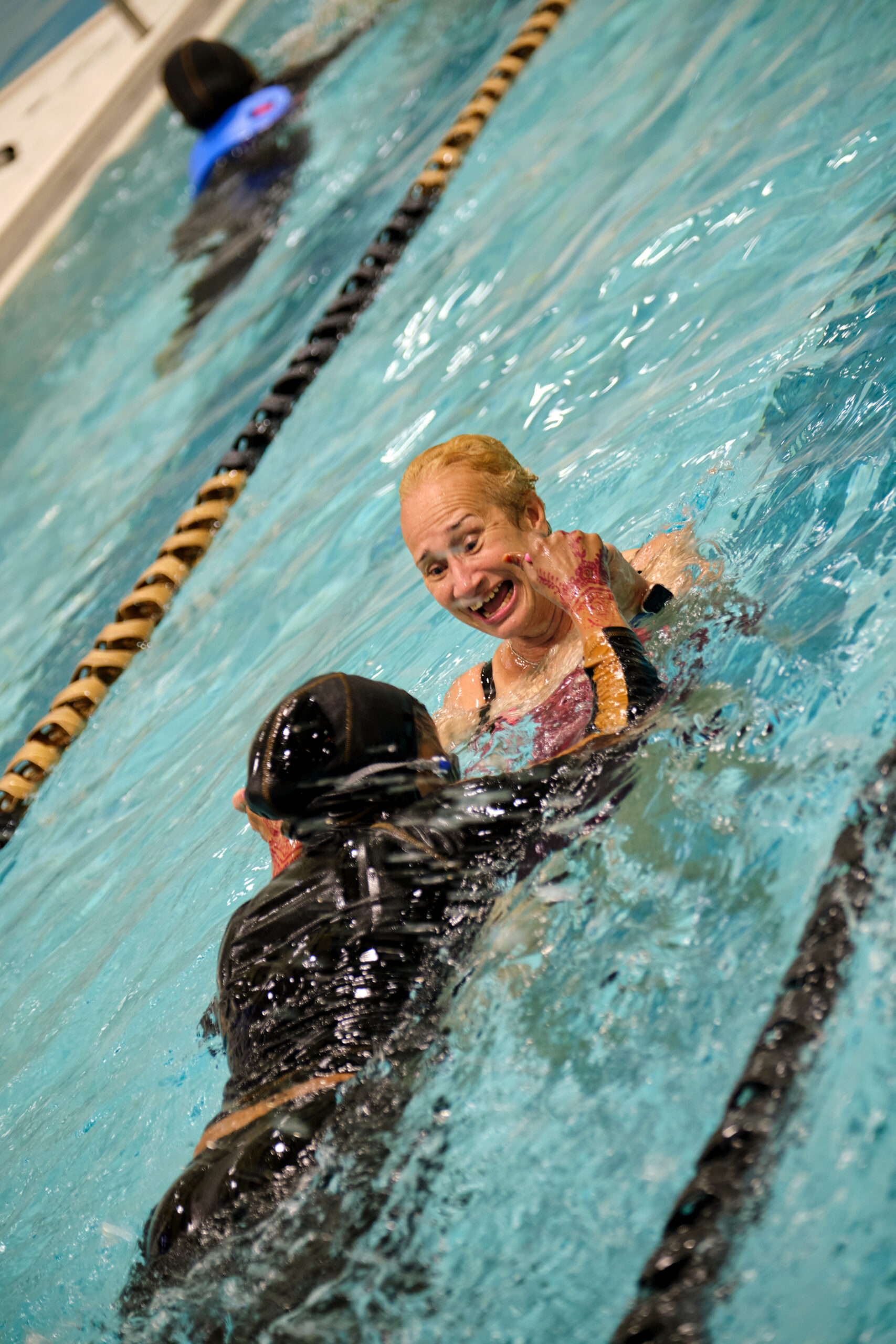
“Historically, the ideology of race functioned as a justification to exclude racialized people and isolate them from the centre of social, cultural, economic and political influence,” said Nzindukiyimana, whose research focuses on Black Canadians’ sport histories in the 20th century, specifically those who confronted racist ideologies both on and off the field.
“Yet, this did not preclude the use of sport as an escape from harsh treatment or for fostering pride to marginalized communities.”
She also noted that pseudoscientific racist practices, such as eugenics, attempted to explain Black absence as a natural consequence of imagined biological differences, disregarding Black communities’ long history of swimming, including colonizers’ own records of swimming Africans.
Canada’s national swim team didn’t have a non-white member until 1980 — Black swimmer Debbie Armstead, from Calgary — which Nzindukiyimana attributed, in part, to competitive club swimming being “an expensive activity with an insulated culture. This context made the pool a political arena; access to it for historically marginalized groups and racialized groups represented and represents a challenge to White supremacy and socio-economic inequality.”
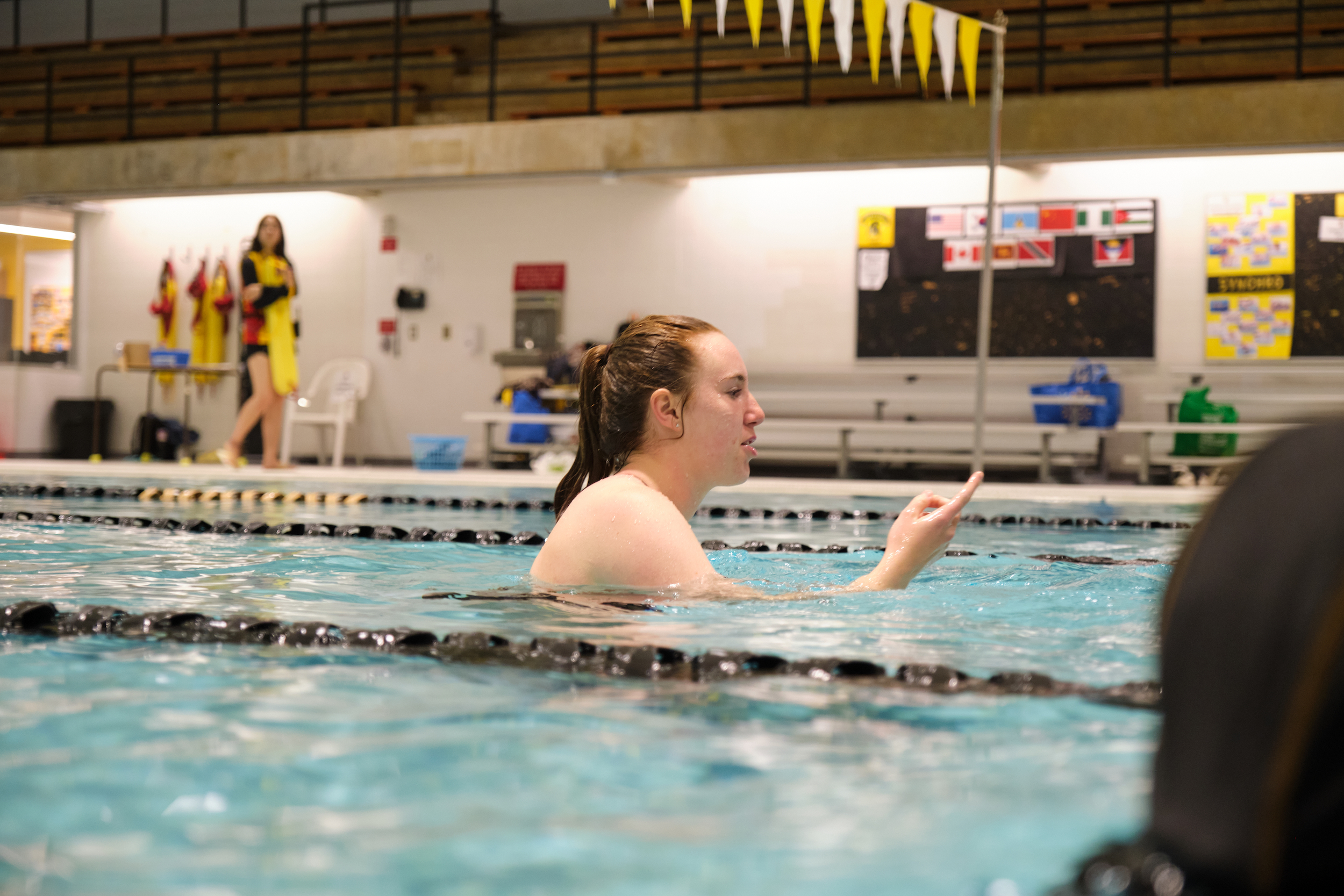
Alberta researcher Lisa Tink tries to tie what we witness in public recreation spaces to a fundamental understanding of Canadian society. “My specific research question is something about how recreation came to serve such a small portion of human diversity,” says Tink, once a postdoctoral fellow in kinesiology, sport and recreation at the University of Alberta.
In her 2022 book Fit to be Canadian? The Recreation Industrial Complex in Canada, Tink weaves together Indigenous history, immigration history and the role of race-based pseudoscience in the 19th and 20th centuries to account for gaps in the historical record of recreational sporting.
She says that as governance transitioned from monarchies to democracies, Canada went from an “off with your head” approach to an idea she calls “make live, let die”: whether through policy or physical facilities, the country provides middle to upper class folks with sports and recreation opportunities while racialized and marginalized communities are left abandoned.
“At the same time, you’ve got policies where literally entire Indigenous communities don’t have clean drinking water,” Tink explains. “We’ve got this set of policies that are increasing the quality of life for those of us that are technically valued more by our governments, and we’re just literally letting other populations die.”
The essential question, Tink tells The Narwhal, is “Who do we deem to be the public? In Canada, up until the 1970s, it was white people of Western European descent. Anybody outside of that wasn’t necessarily considered to be part of the public, and therefore didn’t need to be considered as users of these public goods.”
“Chinese individuals and Black migrants from the States were the most pronounced ‘Others’ in our settler colonial towns and cities because we pushed all the Indigenous people out already to reserves and residential schools,” Tink said. “That’s why in these more municipal spaces, it was mostly Chinese and Black folks that were the ones who were targets of these more explicit [acts of discrimination].”
In Vancouver, one of the ways discrimination was meted out against Chinese-Canadians was a ban on their use of public swimming pools six days a week, which began in 1928. Then, in 1945, a young woman named Vivian Jung attempted to take the swim test required to be a public school teacher. After she was denied access to Crystal Pool, other student teachers refused to swim themselves in an act of solidarity. The ban was lifted later that year and Jung became the first teacher of Chinese ancestry in the city.
In the 1960s, residents of Toronto’s Regent Park neighbourhood protested the lack of a wading pool in their area, demanding both recreation space and relief on hot summer days. In 2023, the neighbourhood is home to a state-of-the-art aquatic centre — but it isn’t local children who take lessons there.
Long home to a significant amount of subsidized Toronto Community Housing units, Regent Park underwent one of the largest urban revitalizations of its kind beginning in 2005. The opening of the Pam McConnell Aquatic Centre in 2012 was a central feature of the broader effort to transform the community into a mixed-income, mixed-use neighbourhood, with a combination of subsidized housing, affordable rentals, rent-geared-to-income units and market condominiums.
But resident Jacqueline Scott says that while the playground in her neighbourhood is always packed with Black and brown kids, that’s not the case for the “marvellous, award-winning swimming pool.”
“When I look inside, who’s having the swimming lessons, it’s all the white kids,” Scott says. Her anecdotal observation is backed up by the city’s own data: in 2019, the Toronto Star reported that only about a quarter of the registrations for that fall’s city-run programs at the aquatic centre — with its 25-metre lap pool, hot tub and water slide — were for people who lived in Regent Park or the surrounding area.
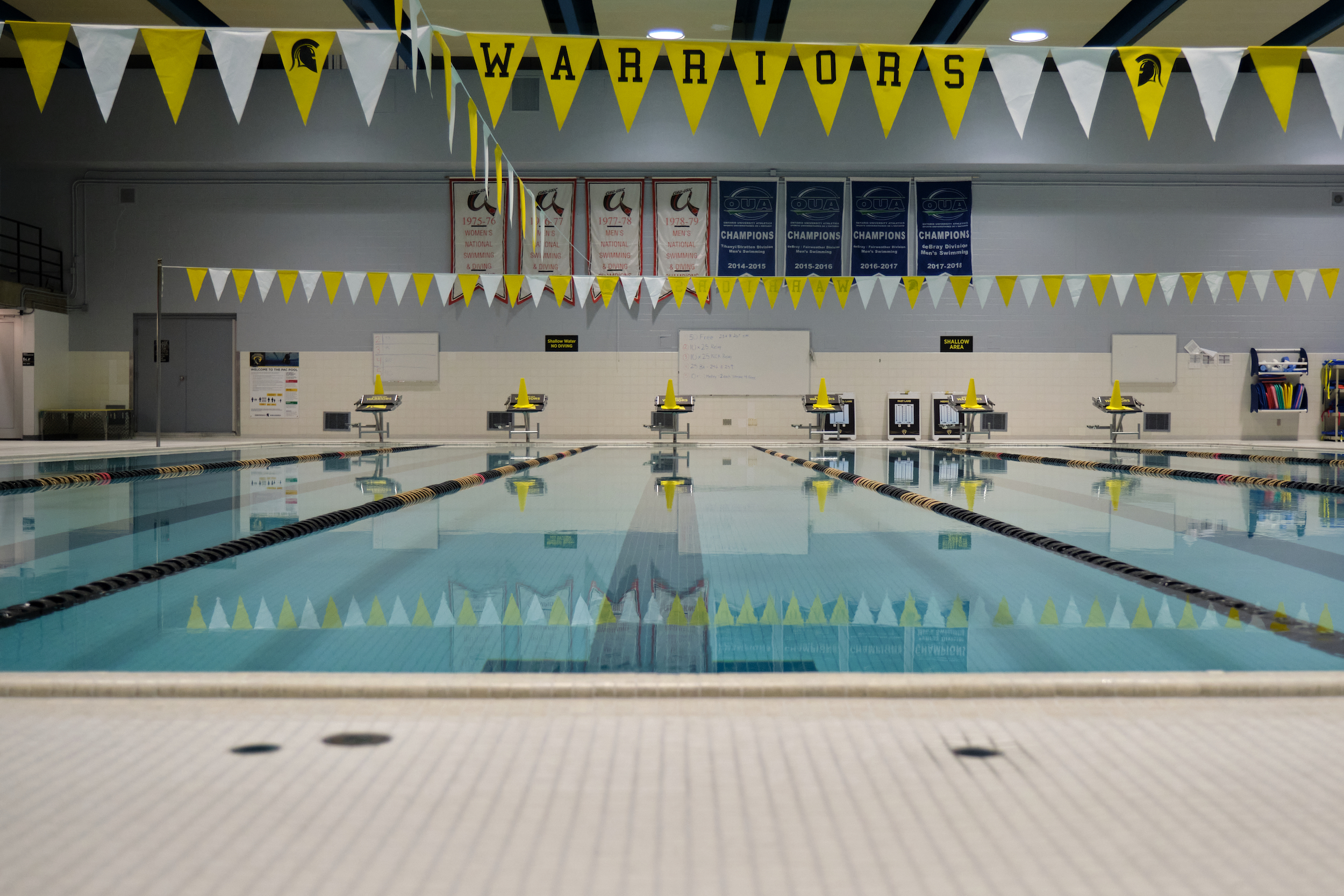
A doctoral candidate at the Ontario Institute for Studies in Education, Scott is studying the perception of the wilderness in the Black imagination — basically, how to make outdoor recreation more welcoming to Black people. She can list “concrete, systemic barriers” that lead to fewer racialized children learning to swim in her neighbourhood: the sign-up process, the lack of racialized instructors, the likelihood that Black parents work “two or three jobs, long hours. Where are you going to find the time or the energy to take the kids swimming?”
She can also list concrete fixes, the most important being to integrate swimming into basic learning. “All the research shows that for Black kids, when swimming is part of the school curriculum, you’re more likely to swim and do everything else through the school system because it’s provided for you, and it’s easier for you,” Scott says.
But pools at the few Toronto schools with swimming lessons on the curriculum are always at risk of the chopping block. Province-wide, as reported by the CBC, Ontario’s lifeguard shortage “is leading to class cancellations as well as reduced public swim times — and frustrations among affected parents.”
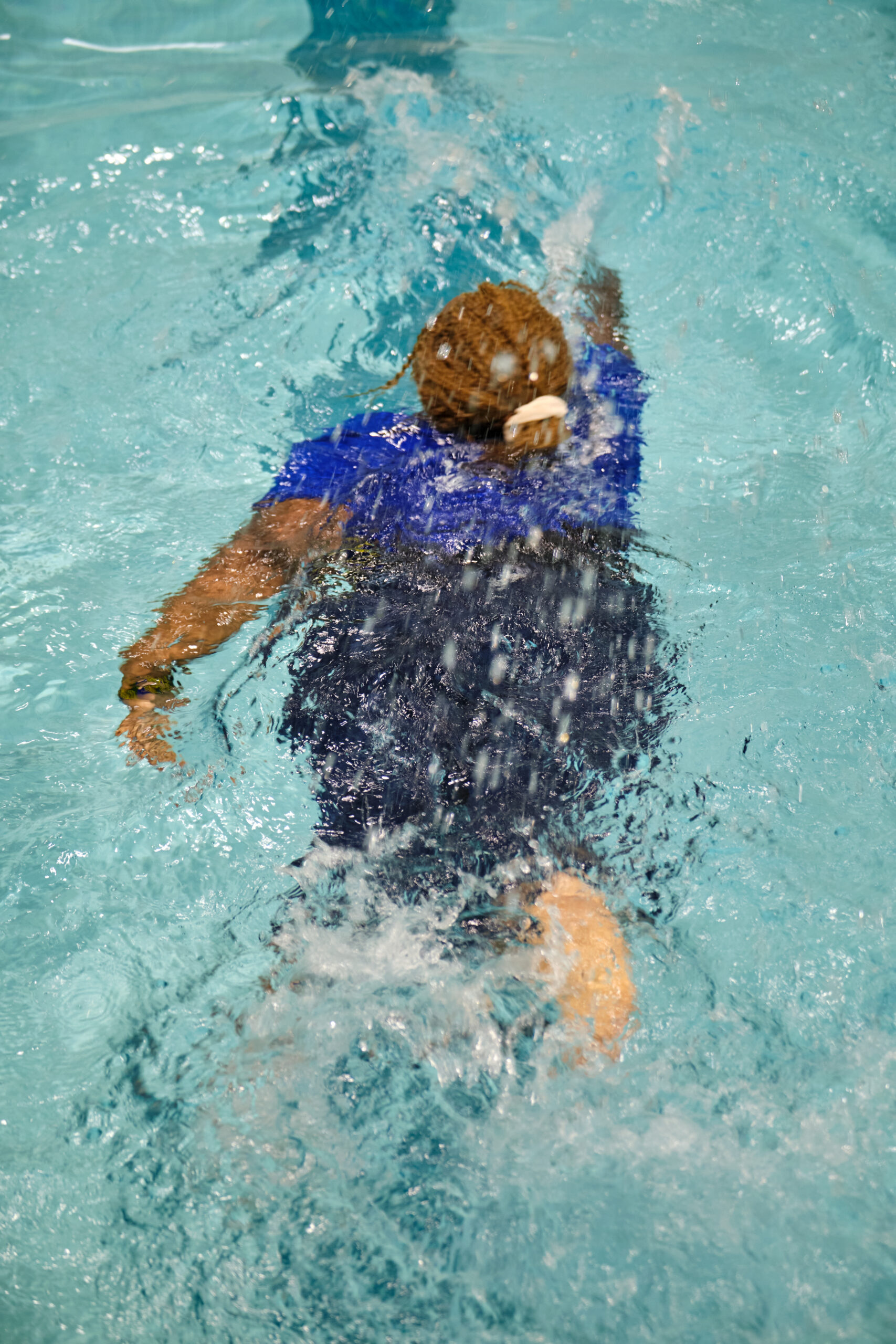
Those who need free or cheap lessons are left with nothing, while those who can afford it pay for private classes. “Class becomes an issue because we forget that swimming is part of the cultural package of a middle class lifestyle,” Scott says.
Scott wants to expose the roots of the issue: the erasure of Black presence from Canada’s history, and how that intersects with the country’s deep identification with the outdoors. While explicit exclusion might be fewer and further between these days, the persistent gaps in swimming instruction — and in those who drown — show the foundational racism of Canadian recreation, she says.
“We can imagine ourselves in any kind of landscape, any kind of setting, because historically, we’ve been there,” she tells The Narwhal. “The idea that Black people don’t ski or snowshoe — well, what were we doing for the past 400 years? We were here. Canada is the land of lakes … well, we’ve been canoeing on the lakes, we’ve been swimming.”
Scott points to researcher Dwayne Fields, the first Black Briton to reach the North Pole, and Josh Liendo, who in 2021 became the first Black Canadian swimmer to win a gold medal at a major international competition, as evidence of the drive to persevere.
“Yes, there are barriers, but they still haven’t stopped us. They make it much more challenging, much, much harder. But we still go ahead and do it anyway. We do swim, but we don’t swim in numbers that we should be able to.”
Having taken lifesaving classes, Scott knows swimming lessons could save a life. She has one essential question for those that work in the recreation and environmental sectors: “Where are the Black people on staff?”
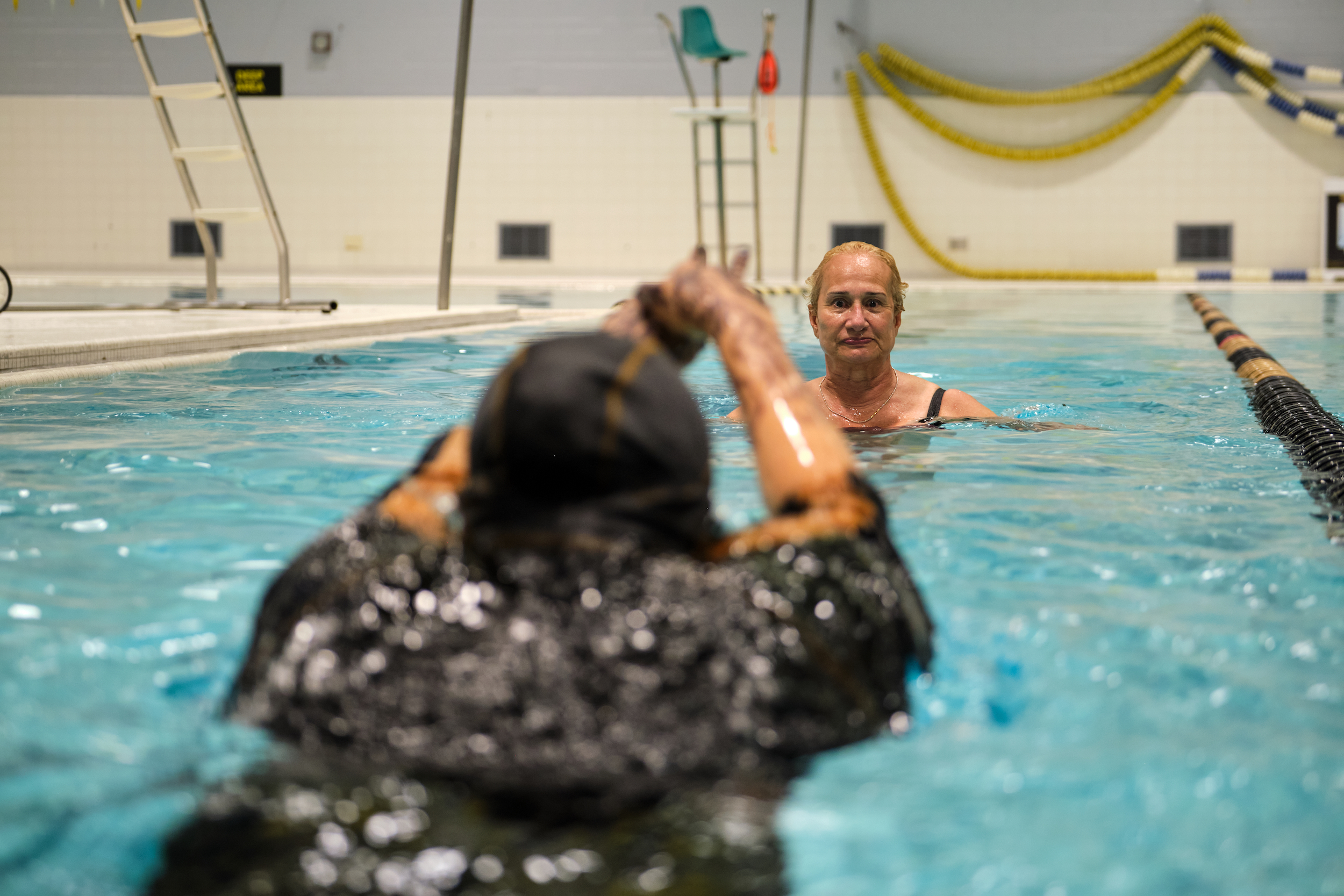
“Number one, hire Black people, support Black people, promote Black people,” Scott says. “I am tired of talking, I am tired of ‘We need more research, we need this, we need that.’ For Christ’s sake, the planet is burning.”
“If you want to see change, you have to hire Black and Indigenous staff. You have to support them, you have to promote them, you have to give them power. They know how to reach out to their communities. They know the questions to ask. But if you don’t hire us, how are things going to change?”
The 2014 University of Toronto report on drowning and ethnicity made recommendations aimed at lowering the rates among communities of colour. The researchers list them as a “hypothesis,” but they seem straightforward: more opportunities to swim, swimming and water safety lessons that are relevant to ethnic and rural populations and outreach to these groups, rather than waiting for them to sign up on their own.
For Beckford Henriques and her team, that hypothesis is in full swing. The first season was a success — by May, she was looking on like a proud mama as her students swam 15 metres unassisted.
Beckford Henriques plans to hold more sessions, including trying again to entice male participants. She believes her program could work in outdoor lakes and ponds, with enough staff, trained properly. That will only come with buy-in from institutions. She emphasizes that the University of Waterloo didn’t just help with funding, but also opened its facilities to people who aren’t staff or students, for something that wasn’t competitive.
“It’s for one hour,” Beckford Henriques says. “Why can’t other places do this? It’s a life skill.”
Get the inside scoop on The Narwhal’s environment and climate reporting by signing up for our free newsletter. On a warm September evening nearly 15...
Continue reading
Court sides with Xatśūll First Nation, temporarily halting Mount Polley mine waste expansion

Break out the champagne: Emma’s storied life and leadership in journalism has earned her the...

How can we limit damage from disasters like the 2024 Toronto floods? In this explainer...
